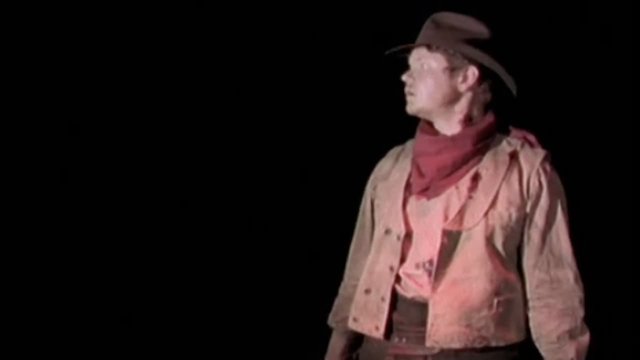
The Twenty-One Lives of Billy the Kid
Where to Watch The Twenty-One Lives of Billy the Kid

The Twenty-One Lives of Billy the Kid is a unique cinematic exploration of one of America's most notorious figures, William H. Bonney, better known as Billy the Kid. Released in 2005, this film dives deep into the legend surrounding the infamous outlaw, presenting a narrative that is as much about the myths as it is about the man. Directed by a visionary filmmaker, the movie blends elements of drama, western, and semi-documentary storytelling to offer a fresh perspective on a well-trodden subject.
The film opens with an evocative portrayal of the American West, setting the stage for the tumultuous life that Billy the Kid would lead. As the narrative unfolds, audiences are introduced to the historical context of the late 19th century, a period marked by lawlessness, territorial disputes, and the quest for personal freedom. Through carefully crafted visuals and a hauntingly beautiful soundtrack, the film captures the essence of this era, immersing viewers in a world where survival often depended on quick wits and faster guns.
Billy the Kid is depicted not simply as a cold-blooded killer but as a complex character shaped by his circumstances. The story presents him as a young man grappling with loss, betrayal, and the search for identity in a changing landscape. His relationships with peers and mentors are explored, offering a nuanced view of his motivations and the events that led him down the path of infamy. Instead of falling into the trap of glorifying violence, the film invites the audience to empathize with the young outlaw, painting a portrait that encourages reflection on the nature of heroism and villainy.
Throughout The Twenty-One Lives of Billy the Kid, various incidents from Billy's life are recounted, often through flashbacks intertwined with present-day interpretations. The film adopts a non-linear approach, allowing viewers to piece together the story akin to assembling a jigsaw puzzle. This structure not only maintains engagement but also mirrors the fragmented nature of historical accounts surrounding Billy the Kid—each retelling adds another layer to the legend, blurring the lines between fact and fiction. The comprehensive perspective encourages viewers to question the narrative constructed by history and media, ultimately leading to a deeper understanding of the man behind the myth.
The supporting cast is equally compelling, featuring characters that impact Billy's life in profound ways. His encounters with historical figures—lawmen, fellow outlaws, and vulnerable figures of the time—help to flesh out Billy's persona, offering insights into the social dynamics and moral codes of the time. The interplay between these diverse characters creates a rich tapestry of relationships that resonate with the audience, depicting the harsh realities of life on the frontier and the various choices that led people to align themselves with or against Billy.
Cinematically, The Twenty-One Lives of Billy the Kid is noteworthy for its stunning visuals and compelling cinematography. The vast landscapes of the American West serve as both a backdrop and an additional character within the story itself. The filmmakers make excellent use of natural light, giving scenes a gritty realism that accentuates the stark beauty and peril of the environment. This aesthetic choice not only enhances the storytelling but also evokes the emotive undercurrents of isolation, struggle, and the yearning for freedom that define the era.
The film's score plays an essential role in establishing tone and atmosphere, enhancing the viewer's emotional experience. The music combines folk and Western influences, serving as a haunting echo of the experiences and sentiments of the characters. The score punctuates key moments, weaving through the narrative and lending a sense of urgency or poignancy as needed, elevating the film from a simple biopic to a profound meditation on life, mortality, and the questions of legacy.
As the title suggests, the film poses an intriguing thesis: what does it mean to live many lives? Each of Billy's encounters, the choices he makes, and the lives he touches reflect the multiplicity of existence. The narrative asserts that every person feels the weight of their experiences differently, shaping who they are and the legacy they leave behind. In this way, The Twenty-One Lives of Billy the Kid goes beyond being merely a recounting of a life lived on the edge; it becomes an exploration of identity, memory, and the stories we tell ourselves and others.
In conclusion, The Twenty-One Lives of Billy the Kid is a thought-provoking and beautifully crafted film that delves into the complex legacy of one of America's most enigmatic historical figures. With its rich storytelling, impressive visuals, and multifaceted characters, the film invites viewers not only to witness the dramatic events of Billy the Kid's life but also to reflect on the nature of legend and the human condition. The result is a cinematic experience that lingers long after the credits roll, urging audiences to reconsider their perspectives on history, heroism, and humanity.
The Twenty-One Lives of Billy the Kid is a Western, Drama movie released in 2005. It has a runtime of 55 min. Critics and viewers have rated it mostly positive reviews, with an IMDb score of 7.6..
